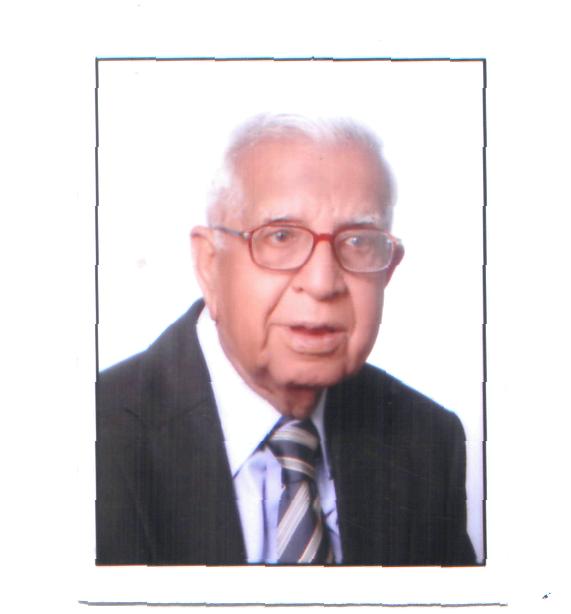Contribute
| Makers Of Modern India |
Girja Kumar
05/23/2013
(I)
SARASVAT HERITAGE
OF
NANDAN NILEKANI and ARUN JAITLEY
The saga of Sindhu / Indus is unique in the civilizational history of the Subcontinent. It has been called ‘the lord and leader of spring and summer floods’. There are at least twenty subsidiaries that join Sindhu in its entire course from the Tibetan plateau. The Vedic civilization was founded, developed and firmly established in the land of seven (and not five) rivers. The Sarasvati river now defunct for nearly four thousand years, has determined its farthest limits.
The Sindhu provided the concept cover, for the five rivers, ‘like mothers to their calves’, ‘unto the roaring rivers’, merging their identity into the Lion River, or, better still, joining the father river. There is a mythological memory of long which places the deltas of the Sindhu and the Sarasvati at the feet of the Somnath temple, in socalled obeisance. No wonder, Yudhishthira was advised by Narada, ‘One goes to the place where Sarasvati united with the ocean’ and ‘O descendent of the Bharata Lineage!. One goes on to where the Sindhu unites with the ocean’.
In the Sambha Parva of the Mahbharata, there is a graphic description of gruesome mass murder, as told by Bheesma to his stepmother Satyawati,’ Parashurama again took his bow to conquer the world twenty-one times. [Consequently] the Kshatriya women everywhere had offsprings through (Sarasvat) Brahmins who were self-controlled’. In another version of the same legend, it was stated, ‘Now that the world was thus bereft of Kshatriyas (consequent to killings) by one of the Bhrigu lineage, what was to be done?’ The chivalarous Sarasvat Brahmins came forward to the rescue of the beleaguered Kshatriya women.
The boundaries of the erstwhile Punjab during the final years of the Raj were coterminous with the Sapta Sindhu, flanked by Sindhu / Indus and Sarasvati rivers, constituting its outer and inner boundaries. This happened to be the original homeland of three remarkable communities, namely, Khatri, Arora and the Sarasvat Brahmin. They are like the wondering Jew; innovative, restless, intellectually inclined, creative, equally insecure like all borderland people, but fiercely loyal to their roots and tradition. They are of a little vote bank value to political India, but an invaluable asset in the task of building institutions of modern India. These three communities have continued to maintain close and intimate relations to this day.
According to Colebroke, ‘The Sarasvat was a nation which occupied the banks of the river Sarasvati. Brahmins are still distinguished by the name of their nation, inhabit chiefly the Punjab or Panchand a west of the river from which they take their appellation through the southern and western parts of Hindustan proper and is probably the idiom to which the name of Prakrit is generally appropriate.’
The Sarasvat are the elite among the Brahmins but extremely unorthodox in their worldview. They are now credited with the authorship of the Prakrit language, considered a language of the people in contrast to Sanskrit as the elite language. They probably made substantial contribution to the development of the Prakrits by making those as the medium of mass communication. Saraiki, Punjabi and Hindi Prakrits could have owned greatly to their intellectual ingenuity.
They are like the Jews to be found everywhre . The Sarasvat Brahmins migrated from their homeland to Goa, the Konkan coast and Uttar and Dakshin Kannad districts by force of circumstances. They must have migrated via Sind, Gujarat, Maharashtra, Goa and finally to the Konkan coast for reasons still suspect. It is a long distance to travel from their homeland, all the way to the Western coast. It is however certain that the Sarasvat Brahmins migrated all the way to the Konkan to be comfortable in their new welcoming environment.
Dr. R.G. Bhandarkar was a fellow Sarasvat. The Bhandarkar Oriental Research Institute, a pioneer institution that has nurtured the definitive and monumental edition of the Mahabharata. Even Shobha Dé, the self-proclaimed Jackie Collins of India, was born as Shobha Rajadhyaksha to a Sarasvat family of Maharashtra. Two former Prime Minister of India, Morarji Desai and Atal Bihari Vajpayee (Shukla) are also Sarasvat Brahmins. So is Arun Shorie, the ever-recalciterant critic of our times, as well as Arun Jaitley fall in the same roll of honours. It would be no exaggeration to say that Kannad and Pune Sarasvat Brahamins and those inhabiting other parts of the country constitute the intellectual vanguard of modern India. (to be continued...)
N.B. Those interested in more information about the subject are requested to refer to Chapter 3, 4 and 11 in Girja Kumar: The Indus People, Saraiki Saga and Sufi-Sant Renaissance, New Delhi; Vitasta, 2012.
You may also access this article through our web-site http://www.lokvani.com/
